
Alliance/iStock/Getty Images
If your only acquaintances with radishes are the red and white circles that lurk next to the tomatoes and cucumbers in your green salad, you'll be surprised to learn that radishes can be a tasty addition to your skillet or roasting pan. Radishes are rich in folic acid, potassium and vitamin C and the available types range from the ubiquitous red globe radish to the peppery hot black radish to the carrot-shaped daikon radish popular in Japanese cooking. Radishes are best cooked using methods similar to those used for their close relative, the turnip. They can be braised, sauteed, roasted, steamed or boiled.
Braising
Braising -- cooking over low heat in a covered pan -- yields flavorful radishes that are crispy-tender, but not mushy. To braise radishes, remove any attached greens and peel if you like, although the only type of radish that must be peeled before cooking are black radishes. Heat butter and oil in a large skillet, add the radishes and pour in liquid -- preferably any type of chicken, beef or vegetable stock or even white wine -- seasoned with vinegar, sugar, salt and pepper.
Bring the mixture to a simmer, turn the heat to low, cover the skillet and allow to cook until the radishes are tender, approximately five minutes. Remove the lid and cook the radishes over medium-high heat until the liquid has become thick and syrupy and coats the radishes.
Sauteing
Radishes can be diced, minced, sliced into thin rods or grated and sauteed either alone or with a variety of other vegetables in stir-fries. Black radishes and daikon radishes are the types most commonly used in sautes. Both take well to the spicy, pungent flavors common in Asian-inspired saute dishes, but if you'd like to tone down their acidic bite, peel the radishes and thoroughly salt and wash them before using.
Roasting
Like other root vegetables, radishes can be roasted under high heat with minimum seasonings and preparation time. Toss sliced, cubed or whole radishes with olive oil, salt, pepper and any other desired seasonings and place on a rimmed, oiled baking sheet on the center rack of an oven preheated to 425 degrees. Roast the radishes for 30 to 45 minutes, using a spatula to turn and stir the radishes halfway through the cooking time, until they are fork-tender and browned.
If you'd like to roast radishes with other produce, choose vegetables with a texture similar to radishes -- turnips, carrots, parsnips, potatoes -- to ensure that all require the same cooking time.
Steaming
Steam radishes whole by putting them in a steamer placed over 1 to 2 inches of boiling water, then covering the pan and leaving undisturbed for five to 15 minutes, depending on the size of the radishes you use. Steamed radishes are an excellent addition to fruit and vegetable trays and salads and can be added to soups, stews and other dishes.
Boiling
Whole or sliced radishes can be cooked in boiling water for 10 to 30 minutes until tender and cooled and then eaten warm or after chilling. After boiling, half-inch thick slices or quarters of any type of radish can be grilled until brown, drizzled with a vinaigrette and used as an unusual side dish or added to salads.
Related Articles

What Can You Do With the Tops of Leeks?

How to Roast Beets for Canning or ...
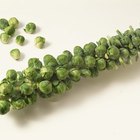
How to Cook Brussel Sprout Greens
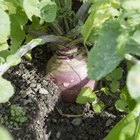
How to Cook Rutabaga in the Microwave

How to Juice a Daikon Radish
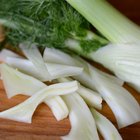
How to Eat Fennel Raw

How to Tell When Fresh Beets Are Done ...

How to Cook Jerusalem Artichokes

How to Cook Cactus Leaves

How to Cook Tomatillos for Chili Verde
How to Boil Chayote
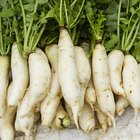
How to Dry Radishes
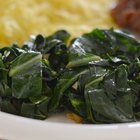
How to Cook Collard Greens Without Meat

Can You Steam Turnips?

How to Prepare Parsnips
How Do I Cook Cabbage on the Stove Top?

How Long Should You Steam Kale?

How to Cook Small Dutch Yellow Potatoes

How to Freeze Ramps & Wild Leeks

How to Cook Fresh Turnip Greens
References
- Gourmet Food Source: Radish - A Complete Guide
- "Food & Wine" magazine; Radishes Three Ways; Bowman Brown and Viet Pham
- Recipetips.com: All About Radishes
- "How to Cook Everything: Simple Recipes for Great Food"; Mark Bittman; 1998
- "How to Cook Everything Vegetarian: Simple Meatless Recipes for Great Food"; Mark Bittman; 2007
Writer Bio
Michelle Kerns writes for a variety of print and online publications and specializes in literature and science topics. She has served as a book columnist since 2008 and is a member of the National Book Critics Circle. Kerns studied English literature and neurology at UC Davis.
Photo Credits
Alliance/iStock/Getty Images